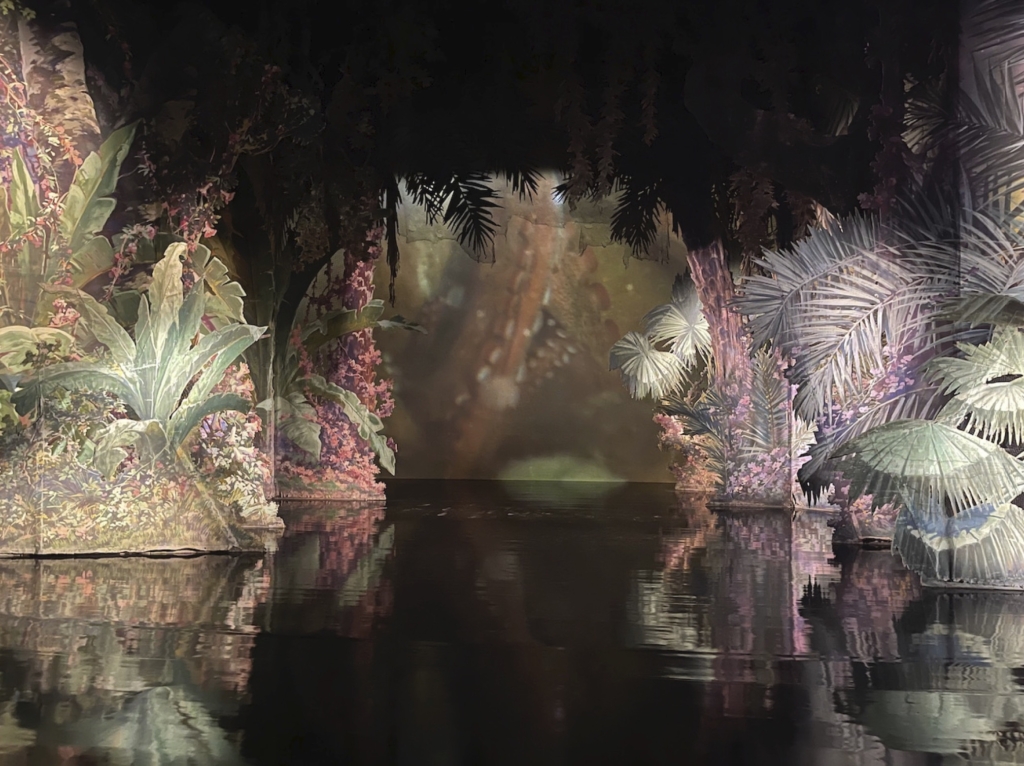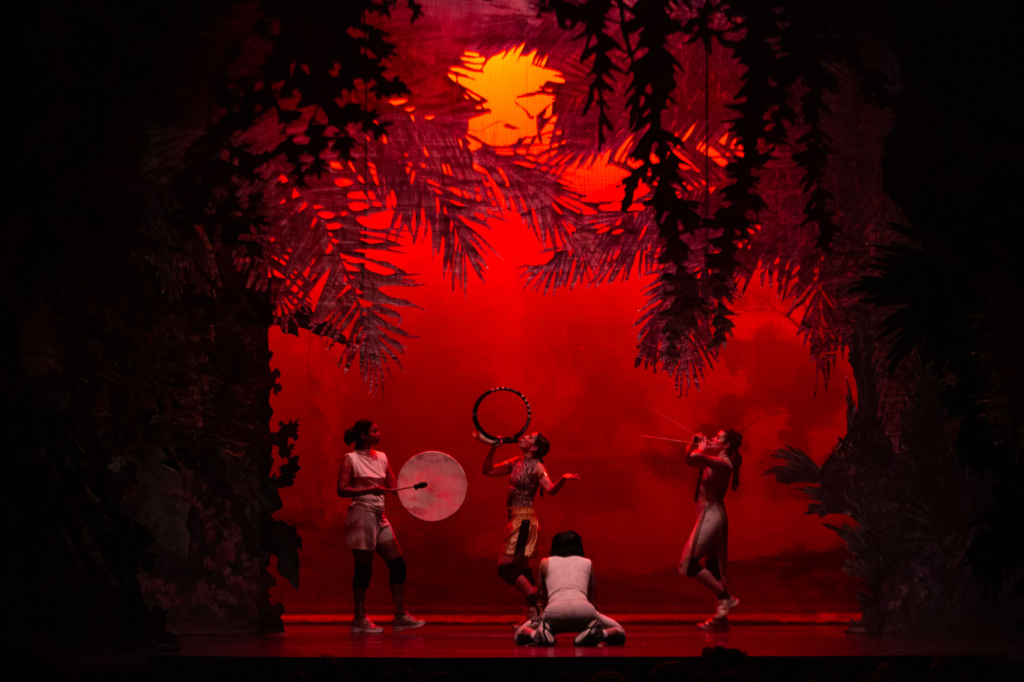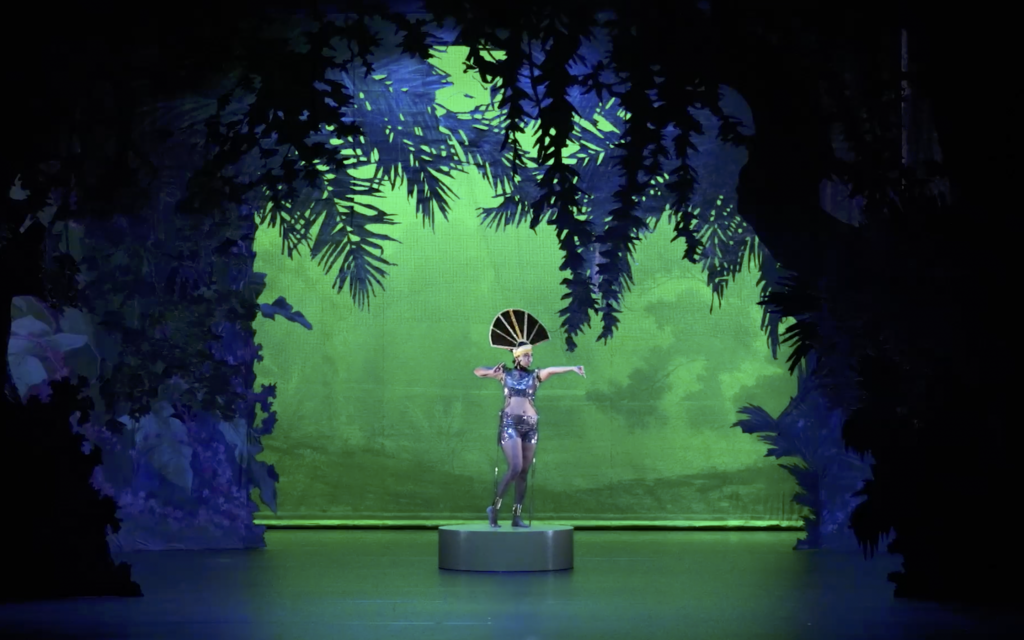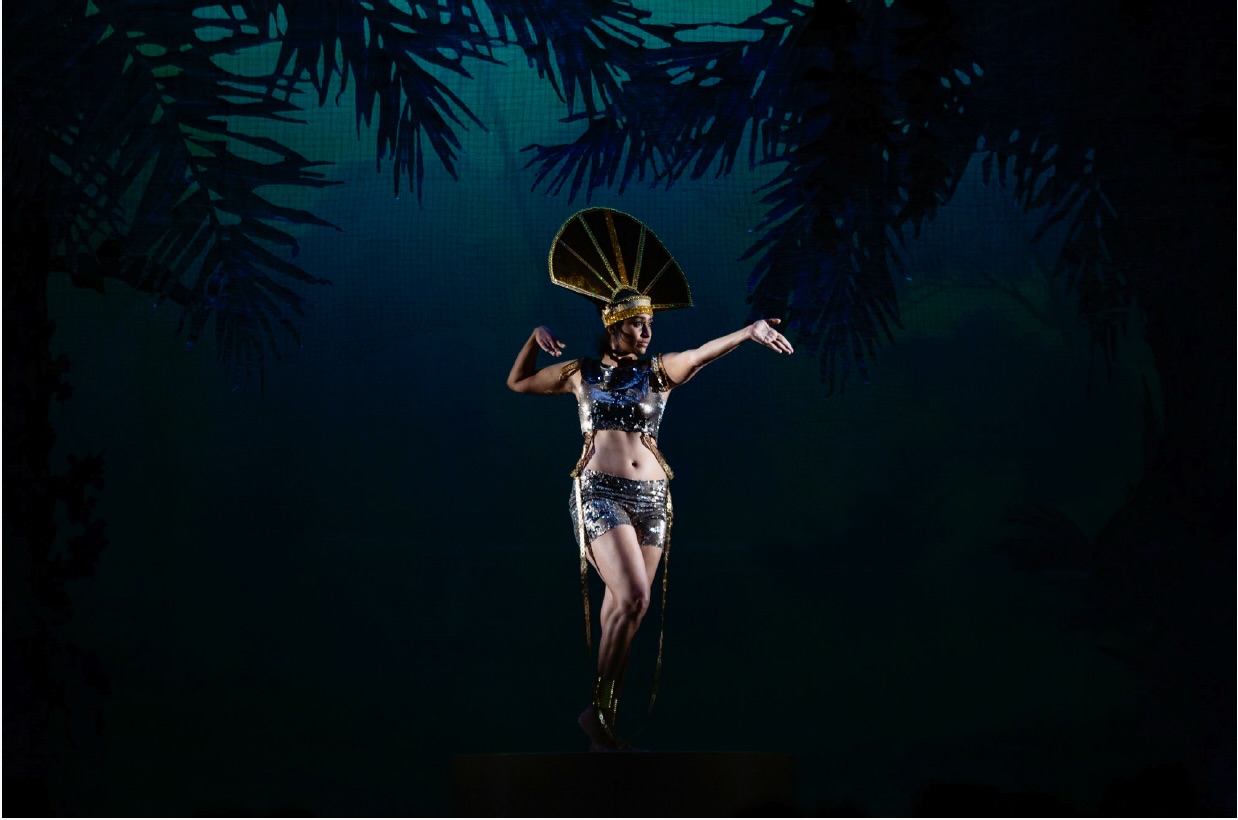EXOTICA – On the brown history of European dance
Endangered Human Movements Vol.1
WORKS
In early 20th century Europe, artists La Sarabia, Nyota Inyoka, François Benga and Leila Bederkhan presented their dances in Europe with great success. Yet the where not recognise in western dance history and were forgotten disappearing from collective memory. Amanda Piña breathes new life into their works with Exótica, tracing back the heritage of racialised artists performing in European theatre stages in what she refers as „the brown history of European dance“. Exótica is an exuberant ritual conceived as a séance through which dancers as ancestors, queer and femmes of color from the past and the present re-appear on stage and come into conversation with the (white) gaze and the ancestry of the audience. Their performative presence opens a space for reenactments; Initiating invocations, exorcisms and celebration
La Sarabia, (1878-1988), Nyota Inyoka, (1896-1971), François “Féral” Benga (1906–1957) Leila Bederkhan (1903-1986) once travelled through Europe presenting their dances. They operated between the lines of the white exotic gaze. What kind of work did these dancers and choreographers of colour made at the time and how it was perceived? What relevance does this heritage has today? What is still present of their contexts (racism and the white gaze) in our contexts of work within Europe and beyond?
Amanda Piña:
“Within this new volume of research I would like to get to know my direct ancestors, they represent the brown history of European dance; Women and queer fellow artists, dancers and choreographers of color living and working in Europe at the beginning of the 20th Century. To host their reappearance is the vision and intention of this new work, an invocation and a spiritual quest on the implications of whiteness, understood as an -invisible for itself- embodied ideology, an unmarked and unnamed position”.
Review by Giulia Casalini on Dance Art Journal here




Picture.Venuri Perera as Nyota Inyoka by Tammo Walter.
Dates
Credits
Credits:
Artistic direction: Amanda Piña | Choreographic research : Ángela Muñoz Martínez, André Bared Kabangu Bakambay, Venuri Perera, iSaAc Espinoza Hidrobo, Amanda Piña | With and by: Ángela Muñoz Martínez, Zora Snake, iSaAc Espinoza Hidrobo, Dafne del Carmen Moreno Huerta |Dramaturgy: Nicole Haitzinger |Integral design: Michel Jimenez | Stage set and scenography: Forêt Asiatique (1921) by Albert Dubosq, reproduced by Decoratelier Jozef Wouters as part of Amanda Piña’s contribution to Infini #18 (2022) | Technical direction: Santiago Doljanin | Light assistance in Brussels: Krispijn Schuyesmans | Music: Ángela Muñoz Martínez, Zevra | Lyrics: Amanda Piña | Singing: Dafne Moreno Huerta, Angela Muñoz Martínez, Zora Snake, iSaAc Espinoza Hidrobo, Amanda Piña | Live music: Ángela Muñoz and performers | Sound design: Dominik Traun | Costumes: Federico Protto | Director’s assistant: Pierre-Louis Kerbart | Video documentation: CIRCA
Produced by Amanda Piña/ Studio Fortuna in Coproduction with Kunstenfestivaldesarts,
Holland Festival, Festival d’Automne à Paris, Tanzquartier Wien, PACT Zollverein, DDD –Festival Dias da Dança, La Bâtie-Festival de Genève, NEXT Festival
Supported by: De Singel, KWP Kunstenwerkplaats, wpZimmer
Thanks to: Stadsschouwburg Kortrijk, Showtex, NTGent workshops, Bruno Forment, FWF funded project Border Dancing Across Time P-31958, Christina Gillinger-Correa Vivar (archival research), Rolando Vázquez (decolonial theory/interview)
Funded by the Cultural Department of the City of Vienna, Arts and Culture Division of the Federal Chancellery of Austria
Performances in Brussels with the support of Österreichisches Kulturforum in Brussels
© Amanda Piña / Nadaproductions, Fortuna 2023
